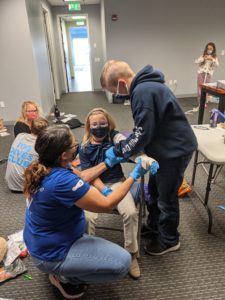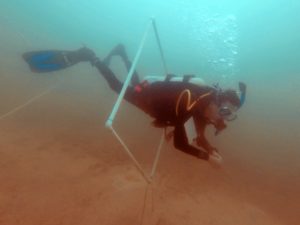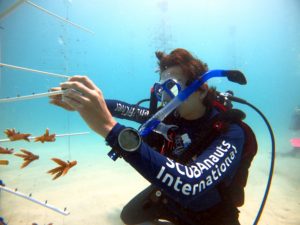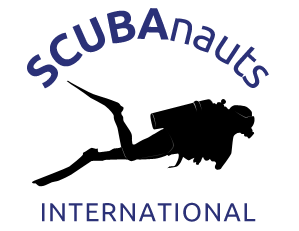Hi, my name is Steven and I’ve been in SCUBAnauts since September, 2020.

Learning how to treat a variety of injuries in the field using a small first aid kit is an essential part of becoming an effective Scientific Diver.
Before I joined, I had my dive certification for about a year and had been on around 8 dives. Since becoming a SCUBAnaut, I’ve learned tons about marine science and diving, as well as been able to work towards more certifications and participated in around 12 dives.
Training, Training, and MORE Training
The first step of becoming a SCUBAnaut was probably the most interesting. This was the diving first aid certifications. In order to be confident in first aid skills relating to diving as well as just general first aid, I had to learn tons of new material and make sure I fully understood it. On top of refining my knowledge on general dive safety, I also learned what to do in situations of different dive injuries. I learned how to operate oxygen, what steps to go through in first aid, and how to deal with the most common injuries both in diving and in the world.
After becoming first aid certified, there were still quite a few steps before I could participate on the scientific dives. I had to pass the swim test, the most difficult part of that being a 25-yard underwater swim with just one breath. After I passed that, I did the SLAM (SCUBA Lifesaving and Accident Management) dives, where I first reviewed

As part of his Scientific Diver training, Steven tries out new finning techniques to help him stay streamlined in the water.
the dive skills I learned in my certification in a pool. The next day, we went to Lake Denton in order to practice the skills in a more realistic scenario, as well as practice other skills like navigation. By far the hardest of these skills for me was removing my mask underwater, and then putting it back on and clearing it; it was the only one of the skills that really made me anxious while doing it.
Training In Action – Coral Restoration
Once I finished the training, I was finally able to participate in some real dives. The first scientific dives I participated in were those on a trip to the Florida Keys, working with Mote Marine Laboratory and Reef Renewal USA.

Coral restoration is just one of many research projects SCUBAnauts contribute to. Working in various coral nurseries helps protect the future of Florida reefs.
On these dives, we participated in coral restoration research by cutting nursery-grown coral and relocating it in order for it to grow more, as well as cleaning the trees the coral hung from. During those 6 dives we completed work that would normally take the researchers a few weeks to finish, helping the environment and practicing dive skills at the same time.
Overall, SCUBAnauts has really helped me improve my diving, and has given me a fun way to serve the community.
Although there were a lot of steps to get to the point where I could start diving, they ended up being worth it through the information I learned, as well as the things I’ve gotten to do and will continue to do with SCUBAnauts.
— Steven T., Naut-in-Training, Tampa Chapter

